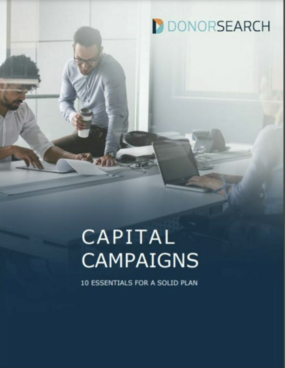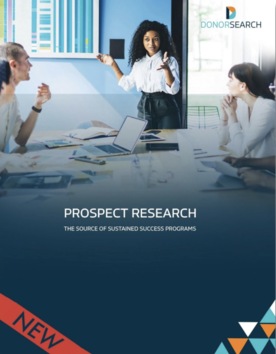
Five Steps to Building Your Campaign Prospect List
ALL capital campaigns need a pool of qualified prospects. By ‘qualified,’ we mean individuals or organizations that have the financial capacity and motivation to contribute to your campaign at the level that meets your fundraising goals.
Here are five steps to quickly build a prospect list that will ensure that you have a robust campaign prospect pool.
1. Use segmentation to tailor your prospect list to your campaign.
Each of your donors and prospects is different. They have different lives, different financial capacities, and different interests.
You can begin to identify the prospects with the greatest giving potential for your campaign by screening your donor and prospect base to create prospect ‘segments’ using the Six Markers of Philanthropy as criteria.
Dig a little deeper into your prospects’ previous giving to discover who will likely be inspired by the purposes of your fundraising initiatives. (Your CRM gift records and screening data will be the place to start!)
2. Keep adding to your prospect list.
Not every prospect will say yes. Likewise, not every campaign purpose will inspire a prospect’s biggest gift. So you need to consistently look for prospective donors and determine their long-term capacity and true giving interests.
Here are a few simple tactics you can use to quickly and consistently discover potential prospects. Even if you have a dedicated prospect researcher, everyone in the organization can take part:
- Provide your organization with easy-to-use resources. For example, give everyone access to wealth and charitable giving databases so that they can ‘look up leads.’
- Focus on political contribution histories. Political donors are proven to support their preferred causes at the highest levels financially.
- Expand your network. Ask key figures in your organization–like board members, major donors, and top volunteers–to help the fundraising effort. They can help by hosting events, opening doors, and even soliciting gifts from their professional colleagues, families, and friends.
- Think about the unique constituencies of your type of organization and ways you might reach them. For example, universities will engage alumni, while healthcare organizations like hospitals concentrate on grateful patients to expand their prospect pools.
3. Evaluate your donor and prospect data for accuracy and completeness, then fill in the gaps.
Maintaining accurate prospect information on the constituents with the most giving potential is key to sustaining philanthropic support. In addition to having current contact information like address, email, phone, the following data points help in meaningful donor cultivation.
- Full giving history
- Wealth indicators (from your prospect screening)
- Record of outreach (events attended, fundraiser visits, etc.)
- Volunteer roles
- Employment information
- Participation in other organizations
- Professional and personal connections
4. Include corporate donors on your prospect list.
Corporations and local businesses of all sizes can be excellent prospects for your capital campaign. Large corporations, in particular, are more likely to make major gifts to nonprofits. Corporations support nonprofit fundraising in a variety of ways:
- Major gifts to specific initiatives
- Fundraising event sponsorships
- Challenge grants to match fundraising goals
- Employee matching gift programs
5. Continue prospecting throughout the campaign.
Keep prospecting so you can respond to any developments that arise throughout your campaign. Be on the lookout for:
- The discovery of new prospects
- An increase in wealth for existing prospects (sold their company/stock, etc.)
- A major prospect dies or declines a solicitation
- Changes to your campaign goal or budget
Follow these five steps for building a campaign-qualified prospect list, and you can expect success.
Subscribe to DonorSearch and screen your donor base to put comprehensive prospect information at your team’s fingertips.
GET A FREE DEMO AND SCREENING
ADDITIONAL RESOURCES

This guide will:
- Explain what a capital campaign is.
- How a capital campaign works.
- Teach you the ten questions you need to answer to plan your capital campaign.

This guide will:
- Explain how prospect research helps.
- Explain how nonprofits do prospect research.
- Detail how to choose the best prospects to screen.
